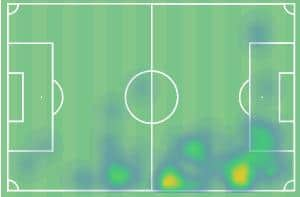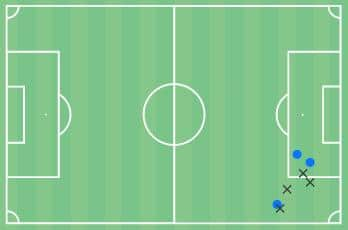Leon Dajaku's key role in Sunderland's system which helped secure comfortable win at Doncaster
and live on Freeview channel 276
Those methods have included changing systems to play with unorthodox wing-backs, while also using a lopsided formation requiring centre-backs to move across and fill the vacant space out wide.
During his side’s 3-0 win at Doncaster, Johnson took a similar approach, yet Sunderland’s shape looked far more like a conventional 4-2-3-1 system compared to previous weeks.
Advertisement
Hide AdAdvertisement
Hide AdThat was largely down to the role played by Leon Dajaku who returned to the starting XI after missing the Carabao Cup game at Arsenal through injury.


Dajaku didn’t take much time to get back up to speed as the 20-year-old winger dribbled into the box from the right flank, skipped past one Rovers player and drew a foul in the penalty area from full-back Branden Horton.
That set the tone for the first half as Sunderland pinned their hosts back – though it must be said Doncaster’s passive approach helped.
A look at Dajaku’s heatmap (Figure One) shows he was constantly on the attack and didn’t have to give his defensive duties much thought, with Bailey Wright moving across to right-back and providing cover.
Advertisement
Hide AdAdvertisement
Hide AdThat was slightly different on the opposite wing where Lynden Gooch was making forays forward from left-back, allowing Elliot Embleton to move infield and link up with Alex Pritchard.


There were occasions when Dajaku and Gooch did look more like wing-backs as Wright tucked in to form a back three, yet those occasions were few and far between due to Doncaster’s lack of threat and change of shape to also play with a back four.
As for Dajaku, his return clearly gave Sunderland another dimension against a struggling opponent, with the winger’s ability to run with the ball at speed and take opponents on proving key.
Against Doncaster, Dajaku may have only been successful with three of his seven attempted dribbles (according to WyScout), yet the areas he was receiving the ball forced the hosts to retreat.
Advertisement
Hide AdAdvertisement
Hide AdWhile Sunderland have changed systems in recent weeks, Johnson would preferably like to operate with a flexible 4-2-3-1 formation.


While he would have to be more defensively aware against better opponents, that would certainly appeal to a winger like Dajaku.
